
On June 13, 2024, the State Administration of Cultural Heritage reported new archaeological findings at the No. 1 and No. 2 shipwreck sites on the northwest slope of the South China Sea, discovering more than 100,000 cultural relics that amazed the world. I really didn't get enough of the news reports for a few minutes.
As the popularity of archaeology and cultural relics increases, the "archaeological site package" - archaeological documentaries are also showing signs of breaking out. People are particularly looking forward to unlocking more historical details of cultural relics and cultural research in the latest archaeological documentaries.
Recently, a reporter from The Paper interviewed Chi Jianxin, deputy general manager of China Film Group Corporation, chairman of Beijing Discovery Documentary Media Co., Ltd., and national first-class director, and Wang Xin, copyright director of Youku, to discuss the past and present of Chinese archaeological documentaries.
Archaeology and cultural relics have always been one of the key tracks for Youku documentaries, with a large and stable audience. It is worth mentioning that Youku has become the first video platform in China to independently set up a "historical theater" in the documentary field, which comprehensively collects various historical documentaries on the market, from different sizes to forms, to provide sufficient content for audiences with different viewing habits and preferences.
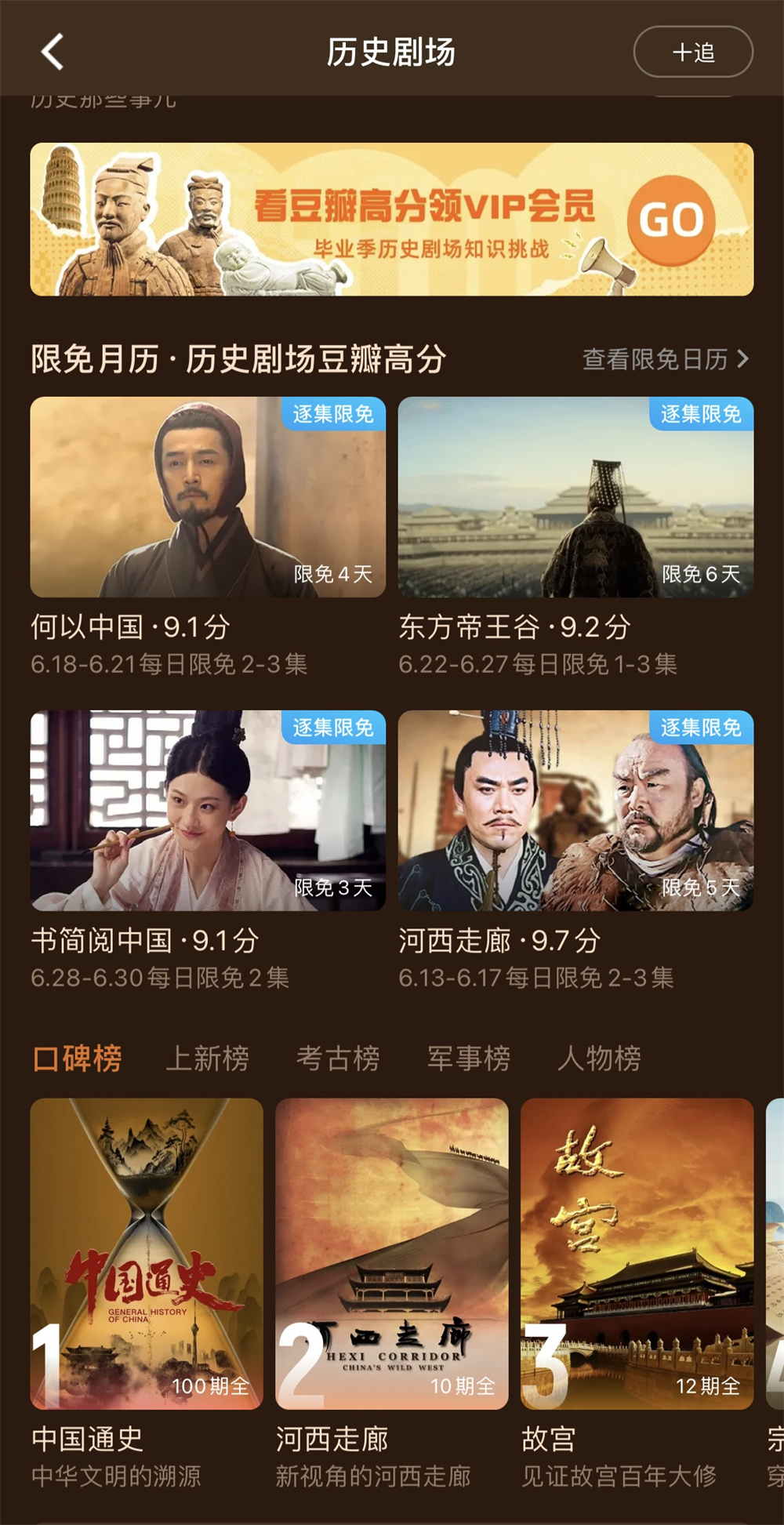
Some works of historical theatre
Wang Xin said, "Over the past five years, Youku History Theater has worked with Discovery Documentary Media to 'always be on the scene'. Taking the original materials of the first scenes of major archaeological sites as the starting point of creation, we have grasped the empirical value of history and provided sufficient film and television value and emotional value to satisfy users' curiosity and sense of presence. For topics such as the awakening of Sanxingdui, the discovery of large tombs of the Western Han Dynasty, the unearthed ritual vessels of the Liangzhu civilization, and the mystery of the coffins of the Qingming Tombs, we have first-hand material supply. Since 2019, Youku Documentary has strongly launched the 'Tomb Raiders Series'. The cumulative number of views of series such as "Tomb Raiders: The Dream of Haihun" and "Tomb Raiders: The Mystery of Sanxingdui in the Secret Realm of Ancient Shu" has exceeded 10 million, which has set off a wave of archaeological suspense enthusiasts among the audience."
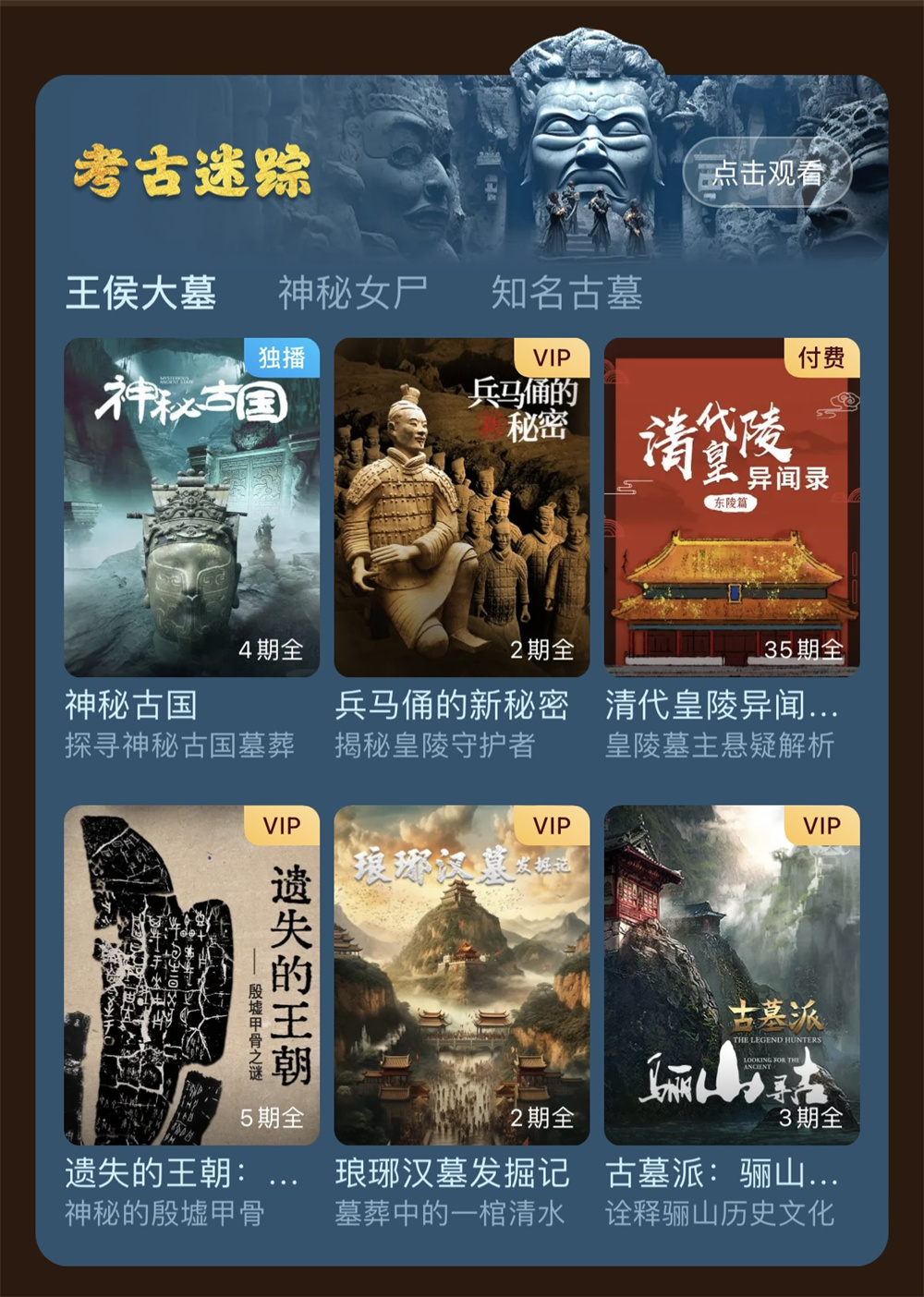
Archaeological Mystery
As the head of the production team of the "Tomb Raiders" series, Chi Jianxin admitted in an exclusive interview with the reporter of The Paper that "over the past 20 years, the archaeological creation in scientific documentaries has been upgraded in terms of technology, but there has been no higher breakthrough in narrative voice and creative ideas."
Chi Jianxin has presided over the planning and production of many documentaries such as "Red Secret Files", "Climbing the Peak", "Liangzhu", "Above the Earth", "Hi, Asian Games" and other excellent works. In recent years, he has led the Discovery Documentary Media Team of China Film Group to win more than 100 awards including "Talent Support from the State Administration of Radio and Television", "CCTV Award", "Top Ten Chinese Documentaries", "Record China", and "China Documentary Academy Award". The most groundbreaking work is the large-scale documentary "Two Hundred Years of Surgery" with a Douban score of 9.0.
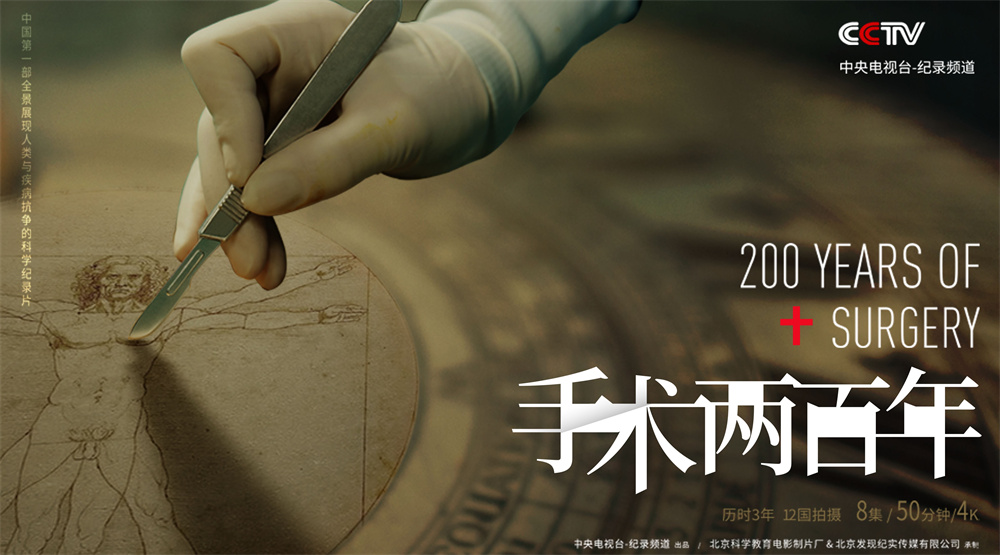
Poster of "Two Hundred Years of Surgery"
"'Two Hundred Years of Surgery' is a typical scientific documentary, and it has a typical continuation of creative techniques. Archaeological works such as 'The Tomb Raiders' and 'Haihunhou', including 'Ancient Shu Records' and 'Xing Xia Records' in 'Looking for Ancient China' broadcasted on CCTV-1 last year, all have the same basic creative style, the relationship between people and scenery, and the means of processing and reproducing."
In his opinion, the easiest type of scientific documentary to get started with is archaeology.
"More than 20 years ago, when we entered the company, our predecessors emphasized the concept of non-fictional, real entertainment programs," he said. "First, you have to satisfy people's love for watching and make it look good, and then convey scientific knowledge in the process."
Science documentaries are a continuation and extension of science and education films
In 2001, Chi Jianxin just entered the industry and went to Beijing Science Education Film Studio (hereinafter referred to as Science Film Studio) to start making popular science programs. At that time, CCTV Science and Education Channel had just started broadcasting. It was a time when Chinese TV documentaries were undergoing a major transformation, especially with the introduction of the concept of "scientific documentaries". The creators felt the change in "creative language and methods", and a major breakthrough was made in the creation of documentaries with the mission and purpose of conveying scientific knowledge.
"From feature films to authentic documentaries, 'Looking at the Great Wall' (1991) broke through our original understanding of reality. After its appearance, a series of high-quality content such as 'Oriental Horizon' and 'Telling Stories of Ordinary People' followed," said Chi Jianxin.
"Looking at the Great Wall" is called "a milestone in the development of Chinese documentaries."
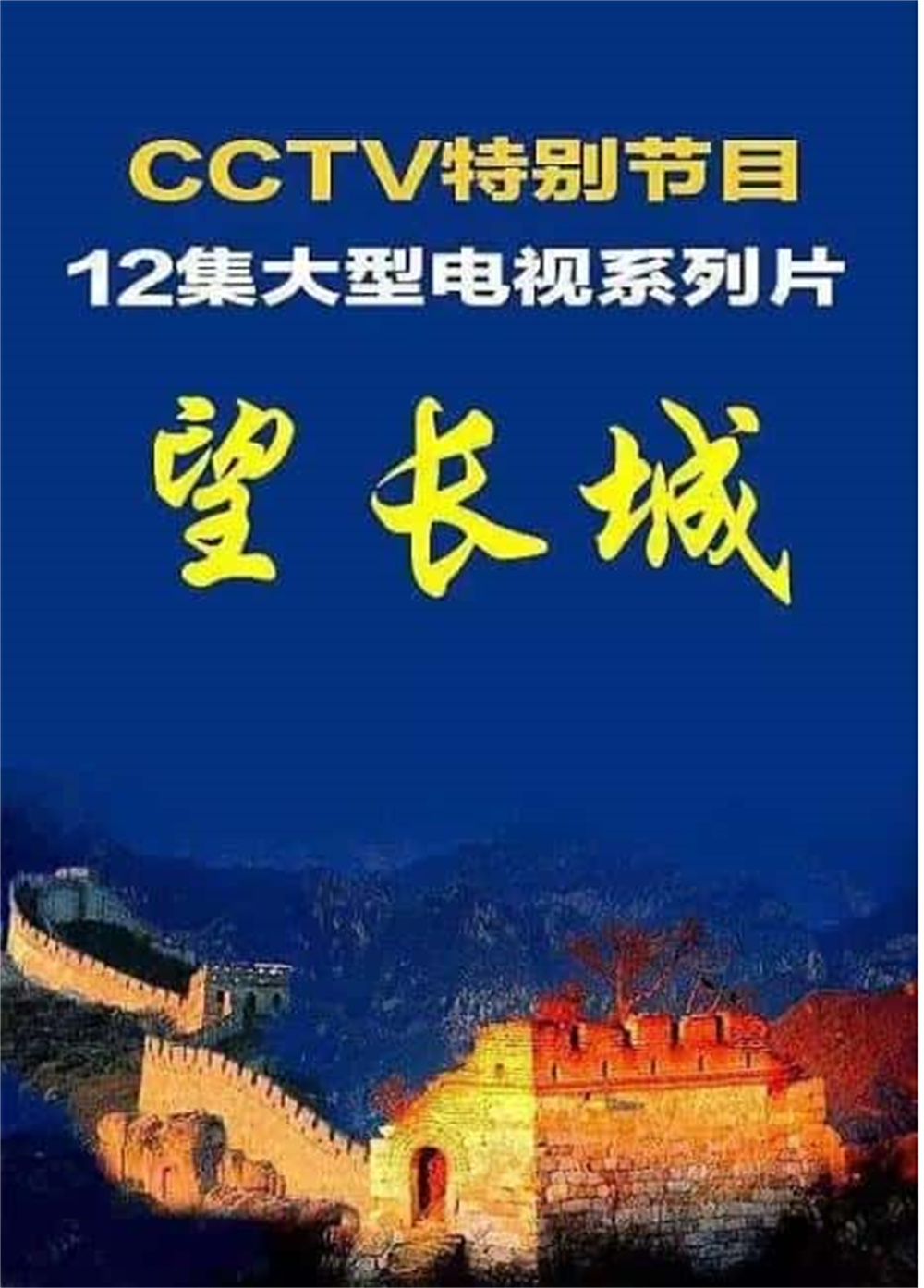
Poster of "Looking at the Great Wall"
The film will present the whole process of visiting the ancient Great Wall directly to the audience in a real and natural way. The host walks along the Great Wall ruins, inspecting the construction and changes of the Great Wall and its role in Chinese history, the impact of the Great Wall on people's material and spiritual life, the relationship between the Great Wall and today's natural ecology and population migration changes, etc. The camera always follows the host's footsteps.
"Looking at the Great Wall" breaks away from the traditional television didactic concept and the production model of "narration while shooting the pictures and making up for it in post-production". It uses a wide range of long shots, synchronous sound recording, on-site participation of hosts, tracking of the development of events and other techniques and a thorough documentary style. It brings a new aesthetic experience to the audience, and has influenced and led to the emergence of a large number of documentary television documentaries.
Before this, scientific documentaries were purely thematic narratives, no different from flipping through a boring literature book.
Chi Jianxin recalled: "Several teachers returned from studying in the United States and brought back the idea of shooting genre films in feature films to the Science and Film Studio. Teacher Liao Ye was one of them. He is a very mature science documentary director and has won two Golden Rooster Awards. At that time, the Science and Film Studio had a film that won the Golden Rooster Award for Best Science and Education Film almost every year. It was relatively rare for someone like him to win two. Simply put, the method of storytelling was introduced into documentaries with the core appeal of knowledge transfer, and the purpose was to make them look good."
At that time, Xue Jijun was the director of the Science and Film Studio, and Liao Ye and Zhang Li were co-founders of the "Journey of Discovery" column. At No. 74, Xinjiekou North Street, they led a young team to create the then influential science documentary column "Journey of Discovery" in China. Like Chi Jianxin, a large number of young graduate students were attracted by this innovative documentary style, and were gradually gathered together by Xue Jijun, Liao Ye, Zhang Li and other teachers to work in the Science and Film Studio. According to Chi Jianxin's recollection, at the peak of creation, the Science and Film Studio recruited a group of graduate students from the Beijing Film Academy, Beijing Broadcasting Institute, Peking University, and Beijing Normal University, and became one of the main creative teams of CCTV's Science and Education Channel and Documentary Channel.

Journey of Discovery

Journey of Discovery book cover
Nowadays, these lucky young people are all leading the way and have become the best in the documentary industry, such as Jin Tiemu, director of "The Resurrection of the Legion", Qi Shaohua, director of "Sniper", Yu Lijun, director of "The Last Moment of Prehistoric Tribe", Yu Le, director of "Aerial China", Dong Haomin, director of "Rice Road", Chen Zijun, director of "Two Hundred Years of Surgery", and Li Jinwei, director of "Mendeleev is Busy".
They call themselves "Xinjiekou craftsmen".
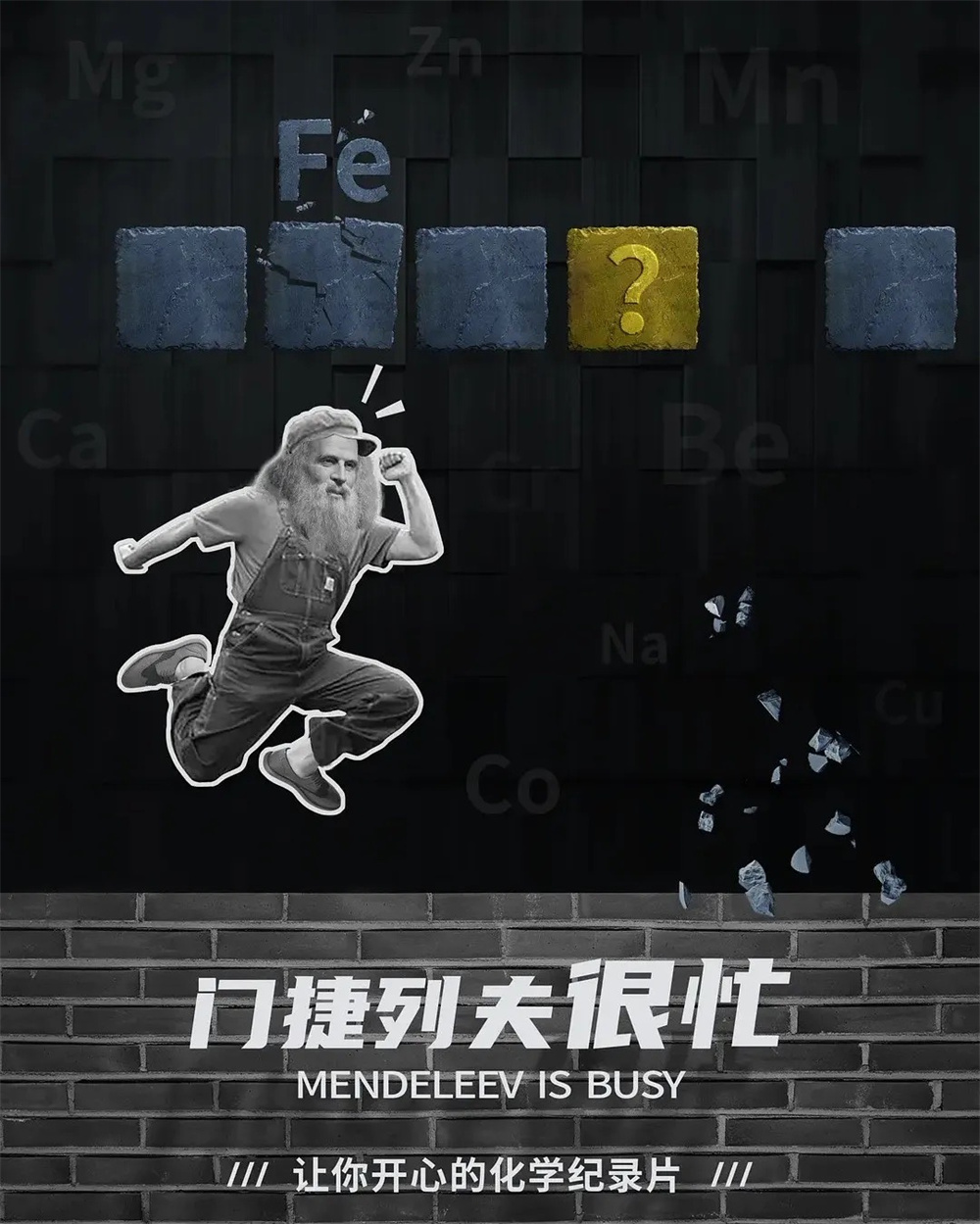
Poster for "Mendeleev is Busy"
The combination of science and humanities is a true scientific documentary
The "Journey of Discovery" column was founded in early 2001, premiered on July 20 of the same year, and aired 104 episodes each year. It mainly produces scientific exploration documentaries, which filled a gap in the country at that time and is a high-quality program for Chinese documentaries. After several years of hard work, it has established a good reputation among ordinary audiences and professional documentary circles, becoming the leader of Chinese scientific exploration documentaries. In the academic community, it is known as the "Science Film School", "Science Film Phenomenon" and "Journey of Discovery School". In the book "History of Chinese Science and Education Films" published by China Film Publishing House, there is a special chapter about the "Science Film School". The program created by "Journey of Discovery" has become a milestone in the history of the development of Chinese scientific documentaries.
The archaeological categories include "The Last Moments of the Prehistoric Tribe" and "The Enchantment of the Phoenix Coffin"; the historical categories include "The Resurrected Legion" and "The Three Heroes of Longtan"; the strange stories category includes "The Phantom of the Deep Lake"; the natural biology category includes "Claws in the Night Sky"; the military category includes "Competing for the Ultra-High Altitude" and "Sniper Hero"; the scientific detective category includes "The Blood Letter" and so on.
Is the Khitan woman sleeping in the tomb a royal princess or a shaman?
The messy terracotta warriors, the unfinished corridors and mausoleums, the misplaced coffins, and the huge underground palace hide a conspiracy that dates back two thousand years...
Is Qin Shihuang's underground palace really as grand and magical as Sima Qian described?
Together with scientists, we squatted beside Kanas Lake in Xinjiang, where cattle and horses mysteriously disappeared by the water and a 20-meter-long strange shadow emerged in the waves...
The huge stele material lying in the mountains could not be transported away six hundred years ago. Who was the builder of the stele? What was the purpose of building the huge stele?
Some programs even become "bedtime programs" for those born in the 1980s and 1990s, who want to watch them but dare not.
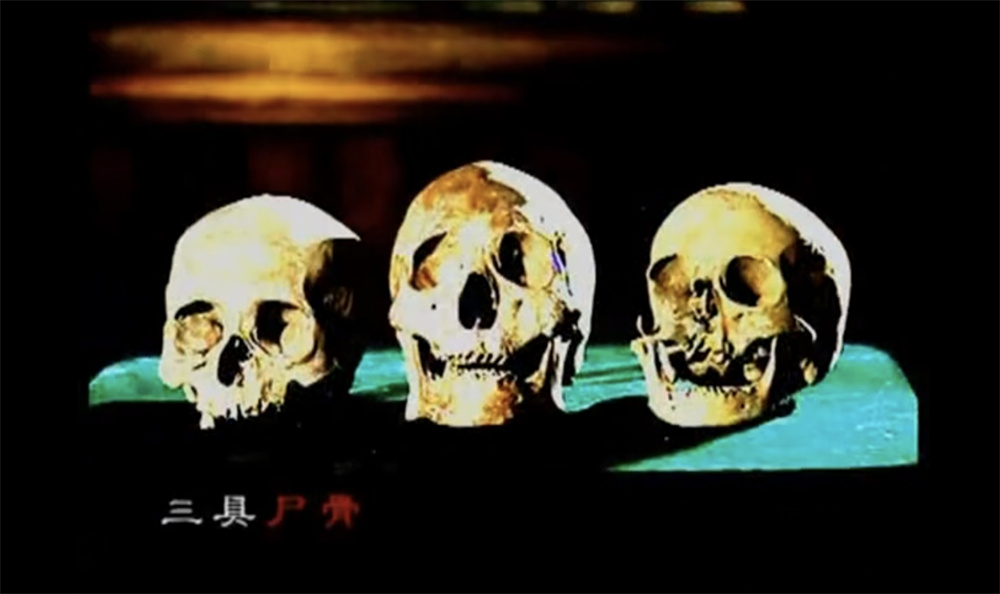
Journey of Discovery
Breakthroughs naturally bring controversy.
In November 2004, in an interview with the creators of "Journey of Discovery", Liao Ye answered a most representative question:
“Is a dramatized, storytelling documentary still a documentary?”
He replied, "We won't choose topics that are too difficult to understand. Our definition is topics with scientific spirit as the background. For example, some archaeological films that audiences like to watch are not completely scientific, but there are some scientific methods in them, or there is some logic in the verification. We emphasize the process of discovery. According to Professor Yan Zhengguang, the first thing in discovery is curiosity, and then the desire to discover. We are not a science and education film, we are not the same as science and education films."
With its rigorous scientific attitude and the entertaining spirit of feature films, "Journey of Discovery" is a watershed film.
Its obvious standard is to add the suspense, conflict, layer-by-layer advancement and other narrative voices of feature films to documentaries.
"It's like building a bridge. There is always a chief designer. How he breaks through each technical point is also the so-called event logic in feature films. We emphasize a conflict point every three minutes. This is the requirement of genre films. Once the tone is broken through and the ratings are high, those things that seemed difficult to shoot before can now be shot," said Chi Jianxin.
"There is still a question about dramatized historical documentaries. Is it still a documentary?" the reporter asked.
"You absolutely cannot say the lines!" Chi Jianxin said, "The first requirement for a documentary is authenticity. We did a very in-depth study of the scene reconstruction at that time, and stopped at the lines. Once the lines were said, it touched the red line. The lines are very concrete, otherwise what is the difference from a TV series? We even tried to avoid showing the actors' faces, and showed only partial close-ups and backs as much as possible."
"In those years, we filmed almost all the large-scale archaeological sites in China at that time. Archaeology naturally has a sense of narrative suspense and is entertaining. Who discovered it? How was it dug layer by layer? Who was the owner of the tomb?" Chi Jianxin emphasized, "Archaeology does not belong to natural science, but social science. Why do we define it as a scientific documentary? It is because it has scientific methods and knowledge is interdisciplinary. The owner of the tomb has history, and the archaeological means are science and technology. The method of understanding the problem is a scientific method. Therefore, our definition of a scientific documentary is to convey scientific knowledge at a superficial level, and at a deeper level it is your way of understanding the world. The attitude is the scientific spirit. This concept must be there. From the beginning, we have emphasized the combination of science and humanities. Only then can it be a true scientific documentary."
Chi Jianxin said: "In 2001, with the emergence of what the industry calls the 'science film phenomenon', suspense and storytelling became the mainstream of scientific documentary creation. After 2002, CCTV's "Approaching Science", "Narration" and "Lecture Room" were successively revised, all moving in this direction. In 2011, CCTV Documentary Channel was launched. At first, a large number of archaeological programs were created by the Science Film team, which made a certain contribution to establishing the brand of knowledge dissemination of the documentary channel."